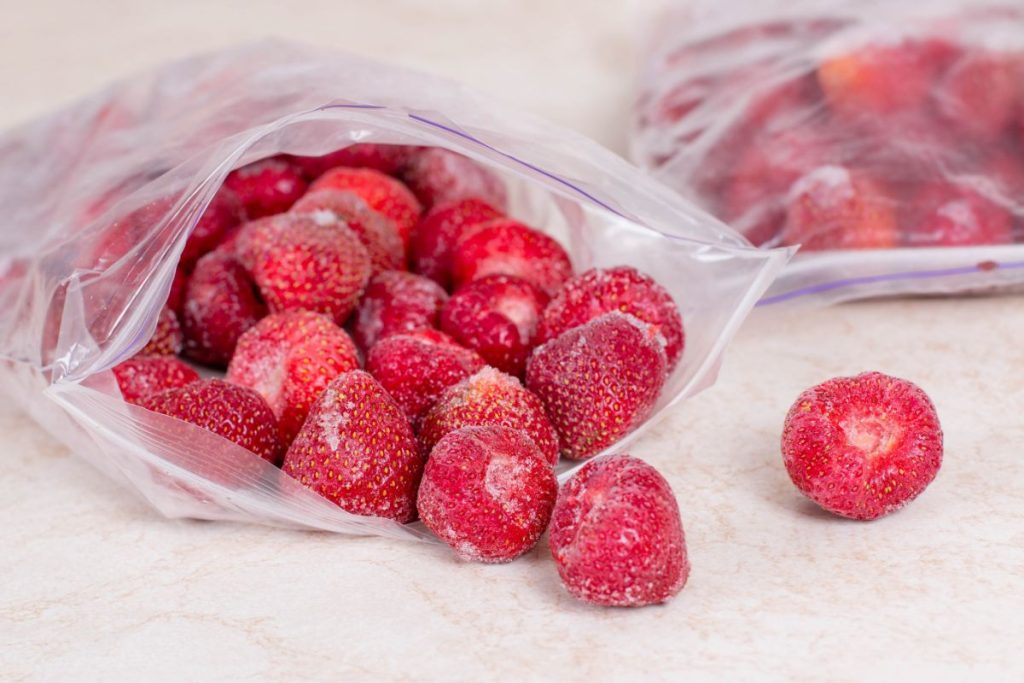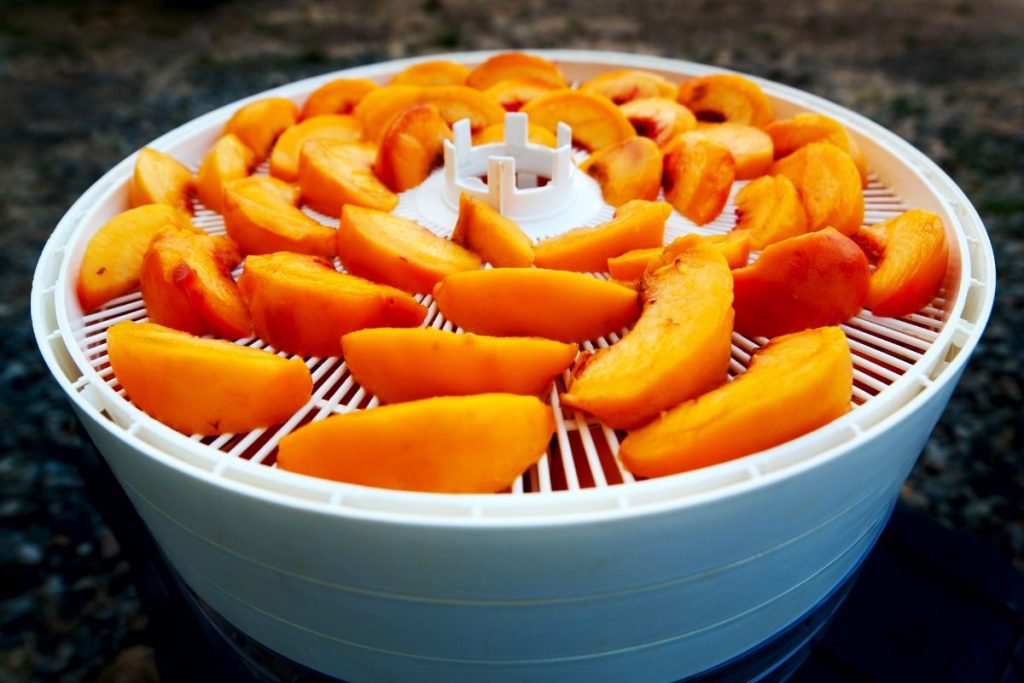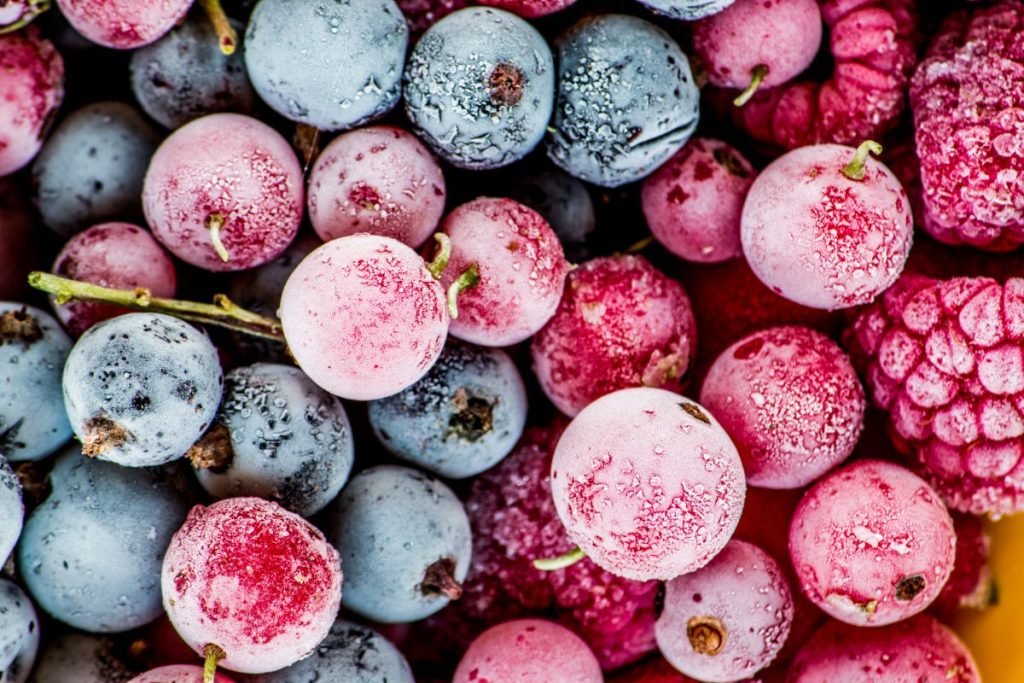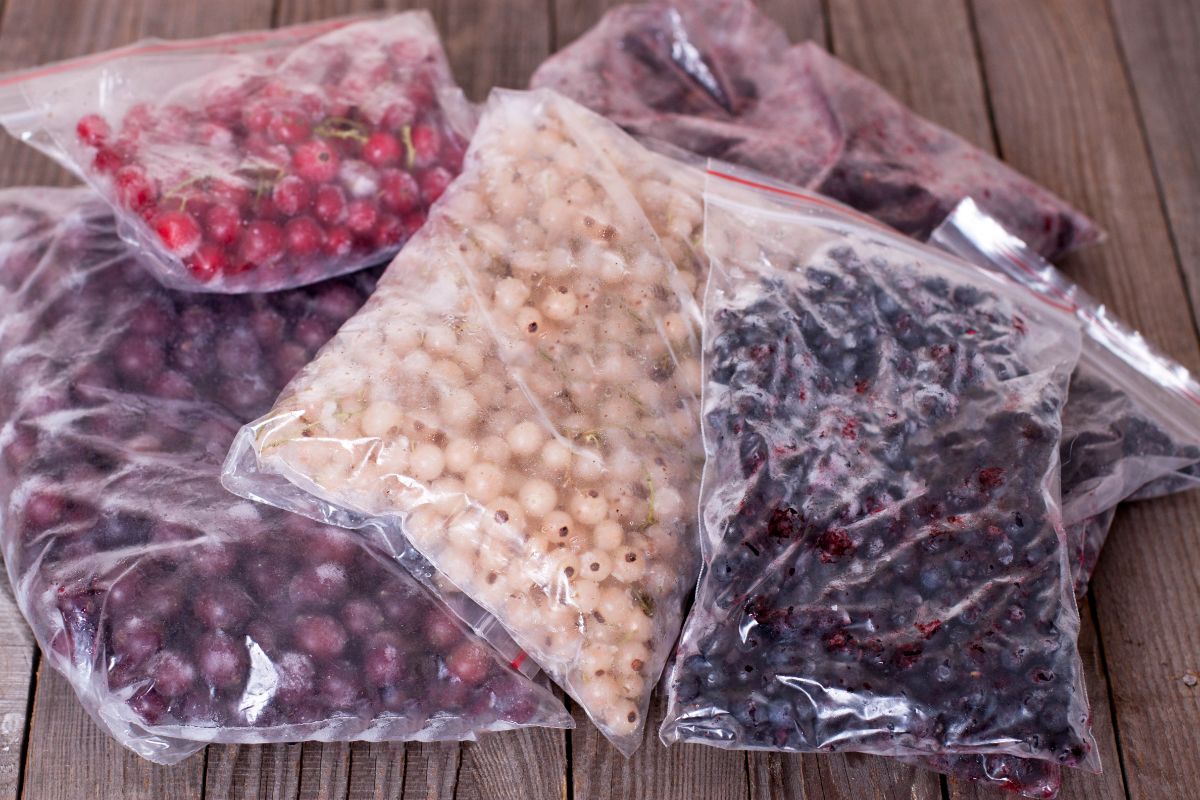When dehydrating frozen fruit, thaw it first to remove excess water. Chop or slice the fruit into small pieces and arrange them on food dehydrator trays. Set the dehydrator temperature between 125°F and 135°F and let the fruit dry for 6-10 hours until fully dehydrated.
Table of Contents
Can You Dehydrate Frozen Fruit?
Yes, you can dehydrate frozen fruit. Whether you have frozen fruit from the grocery store or fresh fruit from the garden, the dehydration process is the same, aside from thawing frozen fruit first.

How to Prepare Frozen Fruit for Dehydrating
There are a few necessary steps to prepare frozen fruit for dehydration:
- Run the frozen fruit under cold water for a few minutes.
- Defrost the fruit by thawing it in the refrigerator overnight or leave it at room temperature until fully defrosted.
- Drain excess water from the fruit using a colander or a strainer. You can also pat the fruit dry with a clean towel or paper towel.
- Slice larger fruits into smaller pieces using a sharp knife or fruit slicer. The size and thickness of the fruit cuts depend on the type of fruit and your preference.
Dehydrating Frozen Fruit in a Food Dehydrator
Once the frozen fruit has been thawed and the excess water removed, follow these steps to dehydrate it using a food dehydrator such as a Nesco or Excalibur food dehydrator:
- Place the fruit pieces in a single layer on clean food dehydrator trays. Leave spaces between the pieces for airflow.
- Set the temperature of the food dehydrator according to the fruit type. Most fruits require a low temperature between 125°F and 135°F to dehydrate efficiently. Follow the manufacturer’s instructions for specific temperature recommendations.
- Allow the fruit to dehydrate for several hours, depending on the type of fruit. Check the fruit for dryness and rotate the trays or flip the fruit pieces as necessary to ensure even drying.
- Test for dryness by bending a piece of fruit and inspecting for moisture. Most dehydrated fruit will snap, but larger fruits such as apricots or prunes will be pliant. Fully dehydrated fruit should appear dry, leathery, and shriveled with no moisture content.
- Once the fruit dehydrates fully, remove the trays from the food dehydrator and let the fruit pieces cool until they reach room temperature.
- Store dehydrated fruit in a tightly sealed, airtight container away from moisture, heat, and direct sunlight.

What Frozen Fruit is Best to Dehydrate?
Some frozen fruits are better suited for dehydration than others. Below are examples of fruits that are good for dehydrating:
- Berries: All types of berries, such as frozen blueberries, blackberries, raspberries, and strawberries, are excellent for dehydrating.
- Bananas: Frozen banana slices make sweet banana bites when dehydrated.
- Mangoes: Frozen mangoes are easily available and have an inherent sweet and tangy flavor that intensifies when dried.
- Peaches: Frozen peaches make a tasty snack that is perfect for adding to trail mix.
- Pineapple: Frozen pineapple chunks can be successfully dehydrated and added to granola.
Benefits of Dehydrating Frozen Fruit
- Cost savings. Dehydrating frozen fruit allows you to enjoy your favorite fruits year-round. You can purchase in-season fruits in large amounts and dehydrate them for later use.
- Extra freezer space. Free up freezer space for the foods that need it and make frozen fruit shelf stable by dehydrating it.
- Longer shelf life. Dehydrated fruit lasts longer than fresh fruit and has a longer shelf life than frozen fruit. Convert frozen fruit to dehydrated fruit for maximum shelf life.
- Portable. Dehydrated frozen fruits are a travel-friendly, lightweight, and healthy snack.
- Preserve nutrients. Freezing fruit preserves nutrients such as vitamin C, and these vitamins aren’t lost during the dehydration process.
- Reduce food waste. Unused frozen fruit can be forgotten in the freezer. Dehydrating it allows for less food waste by increasing the shelf life.
- Sweeter flavor. Dehydrated frozen fruit contains a more concentrated flavor compared to fresh fruit. Freezing causes water within fruit to expand, breaking through cell walls and releasing natural sugars.

What Temperature to Use When Dehydrating Frozen Fruit?
The temperature for dehydrating frozen fruits varies depending on the type of fruit and the dehydrator. The basic rule for dehydrating frozen fruits is a temperature range of 125°F–135°F.
Can Dehydrated Fruit Be Frozen?
Yes, dehydrated fruit can be frozen to extend its shelf life. Dehydrated fruit can last for one year or more in the freezer without losing its texture, color, or flavor.
What is the Shelf Life of Dehydrated Frozen Fruit?
The shelf life of dehydrated frozen fruit varies with the fruit and the food storage environment.
Dehydrated frozen fruits last for 6–12 months when stored at room temperature and one year or more in the freezer. Store dehydrated foods, including dried fruit, in airtight containers such as Mason jars to prevent exposure to air and moisture.

